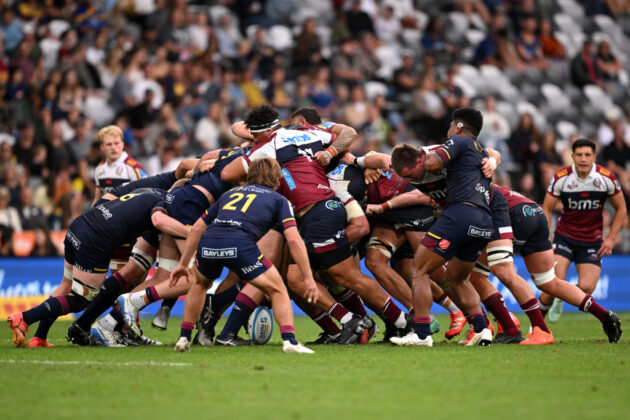A rugby union maul is a play teams can use to gain metres or help to score a try
A question some rugby fans may ask themselves is: what exactly is a maul? Here’s where Rugby World come in and answer the question for those supporters.
The rugby union maul can be an integral part of a team’s game plan. A maul can be used anywhere on the field, but fans will most often see it utilised as an attacking option off the back of a lineout.
World Rugby defines a maul as “consisting of a ball carrier and at least one player from each team, bound together and on their feet”. From the lineout, usually close to the try line, the team attacking will form a maul to drive the ball over the line to score. But a referee can rule a tackle a maul if the person being tackled is held up on their feet by opposition players.
Related: What is a ruck in rugby union?
 Watch the video
Watch the videoThe governing body says that when a maul is being formed a player “ripping the ball from the ball carrier must stay in contact with that player until they have transferred the ball”. In addition, once a maul is formed it must move towards the try line.
There are several laws players must adhere to. They must not be offside and must join the maul from an onside position. If a player leaves they must go behind the offside line before they can rejoin.
When joining a maul, a player must bind onto the player furthest back. They should also have their head and shoulders lower than their hips.
How does a rugby union maul end?
World Rugby says a maul ends and play continues when:
- The ball or ball carrier leaves the maul.
- The ball is on the ground.
- The ball is on or over the try line.
A maul ends unsuccessfully when:
- The ball becomes unplayable.
- The maul collapses (not as a result of foul play).
- The maul does not move towards a goal line for longer than five seconds and the ball does not emerge.
- The ball carrier goes to ground and the ball is not immediately available.
- The ball is available to be played, the referee has called “use it” and it has not been played within five seconds of the call.
- If a maul is formed immediately after a player has directly caught an opponent’s kick in open play, a scrum that is awarded for any of the above reasons will be to the team of the ball catcher.
World Rugby is currently trialling new maul laws in competitions such as the World Rugby U20 Championship, the U20 Trophy and the Pacific Nations Cup.
One of the new laws dictates that the ball must be played after the maul has been stopped once, not twice. Another is designed to protect scrum-halves, saying that “the nine will not be able to be played while the ball is still near a tackle, ruck or maul”. It’s yet to be confirmed whether either law will be introduced permanently.





